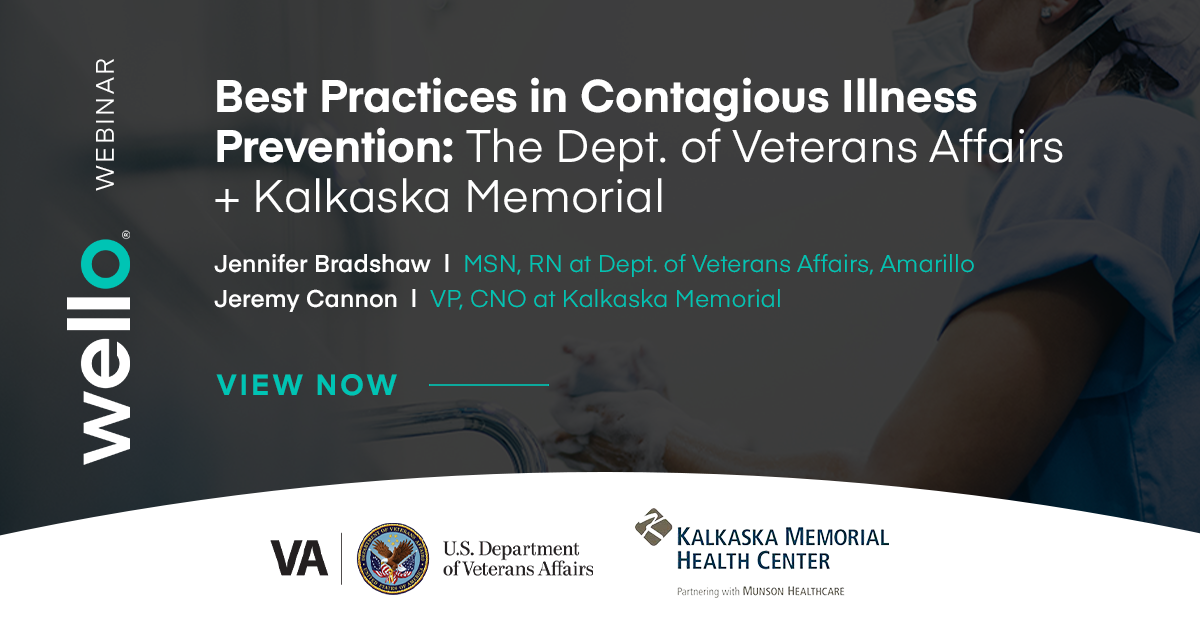Is your facility set to a dial or switch when it comes to health and safety? The right approach matters.
When it comes to establishing contagious illness prevention policies for your facility, choosing the right approach matters.
The key is setting the dial appropriately, so your facility is always ready and able to respond to a health or safety threat in a timely manner. Here’s more on why a “dial vs. switch” approach can make all the difference.
Dial vs. switch: what’s the difference?
The difference in a dial vs. switch approach is simple: instead of a “switch” to turn on or off in response to a health or safety threat, a facility will have policies and resources in place that can be “dialed” up or down as needed.
As an example, at the start of the Covid-19 pandemic, some workplaces had to suddenly turn “on” an infection control and safety switch––implementing policies and procedures that had never been utilized before, such as barriers, face masks, or social distancing. While those approaches may have been necessary and in many situations, effective for the purposes of the facility’s infection control goals, they may have also carried a significant cost in financial, employee, and energy resources due to their urgent implementation.
Following the immediate threat, a workplace with a switch mentality will also completely remove all safety and health monitoring interventions by turning the switch “off.” The barriers will be removed, the masks taken off, temperature and health screenings paused, and the social distancing stickers peeled off – leaving the workplace potentially vulnerable to another future health and safety threat.
A dial approach to health and safety in a workplace, on the other hand, means assuming that some kind of risk is always present and resources, policies, and procedures can be turned “up” or “down” as needed. Just like a thermostat that is set to a baseline temperature, which can be turned up when it’s hot outside, a dial approach to health and safety in the workplace means that your facility will be able to adjust the dial up or down based on numerous factors like community spread levels––before anything extreme happens.
Why is the dial approach needed?
You might be wondering why exactly a dial approach is necessary if the imminent threat is removed––isn’t it appropriate to turn the switch “off” if the threat is removed?
Unfortunately, the reality is that all health and safety for in-person workplaces exists on a spectrum. If your workplace involves humans interacting together in-person, the risk level of contagious illness will never be a complete zero. Those risks will increase at certain times, based on factors such as seasonal illnesses, personnel characteristics such as age and health conditions, and facility differences. Additionally, much of the health and safety risks of any facility are also largely dependent on human behavior. For instance, an employee can choose to come to work while feeling slightly ill and that could influence the entire workplace.
A dial approach incorporates the reality that infectious disease that will always exist and allows a workplace to adjust it as needed. For instance, a dial approach may look like turning the dial up during times of seasonal illness risks, such as influenza, and turning it back down when the risk level lowers. Alternatively, a dial approach could look like setting a baseline for health and safety screening that can help identify when the dial needs to be turned “up” for next-level intervention.
Identifying the need to “dial up”
As mentioned, a dial approach can go beyond a strategy for simply waiting in the sidelines for a risk to strike. Instead, a dial approach can play an active role in identifying risk, preventing an outbreak, and promoting a culture of health and wellness in a facility.
For instance, if your facility sets your health and safety “dial” to include a baseline screening strategy with the welloStationX, which screens employees through a remote-option health questionnaire and touchless temperature scanning, a potential risk can easily be identified very early on, even before building entry.
A baseline screening in your facility’s dial approach could identify both an individual risk as well as alert to employee-wide trends that could signal an impending outbreak––and the need to dial up health and safety protocols. For instance, if an individual is identified with an elevated temperature, depending on facility parameters that you set, that individual will not be allowed to enter into the building, preventing a virus from potentially spreading.
Additionally, because the welloStationX can connect with the Wello portal to log data, it may identify a trend in temperature alerts among certain employees that can be analyzed and utilized for future infection mitigation responses and strategies. If multiple employees in one area of the facility are found to be reading with temperatures above the threshold, and community infection rates of a certain contagious illness are high, measures may be need to be dialed up.
Overall, a dialed-in approach to health and safety in the workplace boils down to keeping programs in place that will help you dial up or dial down interventions as needed. The dial approach is a public health strategy that can help mitigate outbreaks, keep costs down, and create a more efficient workflow for the safety of everyone.


